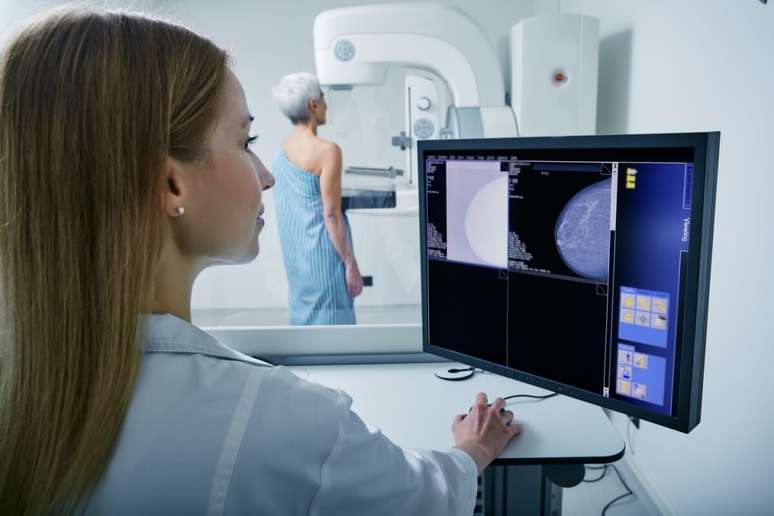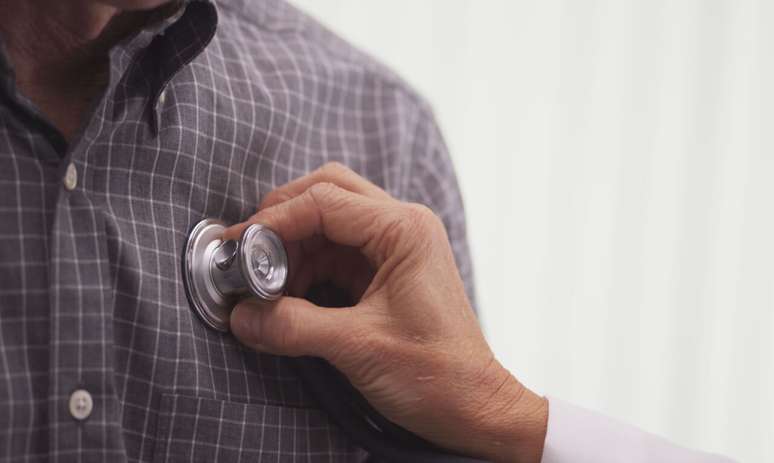The exam is the main tool to diagnose breast cancer soon
Mammography is an examination of an essential image for female health, mainly used in the early diagnosis of breast cancer. The procedure allows you to identify breast changes such as nodules or microcalcifications, often even before being evident to the touch.
Breast cancer is one of the most common tumors among women and with an estimate of 73,000 new cases this year, according to the Ministry of Health. However, there are still myths and doubts that are significant obstacles to the exam: one of these is the fear of mammography.
Although the exam can cause momentary discomfort for some women, the benefits of the detection of the disease in their initial phases are immeasurable. When breast cancer is identified in advance, the possibilities of care and successful treatment are significantly higher and the risk of mortality from the disease can be drastically reduced.
“Mammography is extremely relevant for the health of women, who should not fail to do it for fear of discomfort, since this can prevent diagnosis Early cancerBy reducing the possibilities of care for the patient “, he strengthens the radiologist Dr. Fernanda Philadelpho, from the CDPI clinic and from the high diagnostic, to Rio de Janeiro.
Below, the doctor lists 6 suggestions to feel safer in the mammography. Check!
1. Don’t worry about compression
This compression is absolutely essential as it provides a better diffusion of the breast tissue, which helps to expose the lesions that can exist, in addition to allowing the use of a lower dose of radiation.
2. Remember that not all women feel pain during the exam
According to Dr. Fernanda Philadelpho, the feeling of pain during mammography depends a lot on the level of sensitivity and anxiety of the patient. Compression causes only a momentary discomfort of the breast, but does not damage it or causes side effects.
“The trend is for the evaluation of causing rapid discomfort by compressing the breast in the mammographer. However, some patients are more sensitive to pain in this region than others. In these cases, we enhance dialogue with the patient,” says the doctor.
3. Plan the exam for menstruation after
In order for the discomfort to be smaller, it is appropriate to mark the examination For about a week after the end of menstruation. It is at this moment that the breast will be less sensitive.
4. Silicone prostheses do not prevent the exam
According to the radiologist, the silicone prostheses do not prevent the display of the breast structure in the images. In turn, the exam does not compromise the integrity of the material of the prostheses, released to patients with silicone. At the time of examination, some techniques are used to better see the fabric around the prostheses, such as the rear movement of the systems.

5. Do your previous breast tests for comparison
If this is not the first time that the patient supports the exam, it is important to take the old ones so that the radiologist can compare possible thin changes over time. “This is a fundamental part of the exam and can make a difference in many cases, reducing the need for complementary accidents in mammography“Explains Dr. Fernanda Philadelpho. Furthermore, it is advisable to inform the doctor about the patient’s personal and family history, the use of hormonal treatments and the performance of previous surgical and biopsies.
6. Take the exam regularly
Breast cancer can be caused by a combination of factors, including inheritance, genetic predisposition and external factors. Therefore, women without history of the disease in the family also have the opportunity to develop this type of cancer for life, as well as other tumors that do not depend only on hereditary factors.
“Mammography is a fundamental exam in breast cancer screening, but it is also effective for viewing other changes that can occur in this area. Therefore, everything women They should include it in their health routine, which should start 40 years of age for those who have no cases of breast cancer in the family and 35 or 30 for those who have cases, especially in direct relatives, such as the mother, in which the genetic risk is suspected “, Dr. Fernanda Philadelpho details. Each case should be individualized by the patient who accompanies the patient.
By Rachel Lopes
Source: Terra
Ben Stock is a lifestyle journalist and author at Gossipify. He writes about topics such as health, wellness, travel, food and home decor. He provides practical advice and inspiration to improve well-being, keeps readers up to date with latest lifestyle news and trends, known for his engaging writing style, in-depth analysis and unique perspectives.








![Such an excellent sun in advance: Summary of Friday Episode on August 29, 2025 [SPOILERS] Such an excellent sun in advance: Summary of Friday Episode on August 29, 2025 [SPOILERS]](https://fr.web.img3.acsta.net/img/42/f7/42f7a8383b930afc3367641e2e33b0de.jpg)
